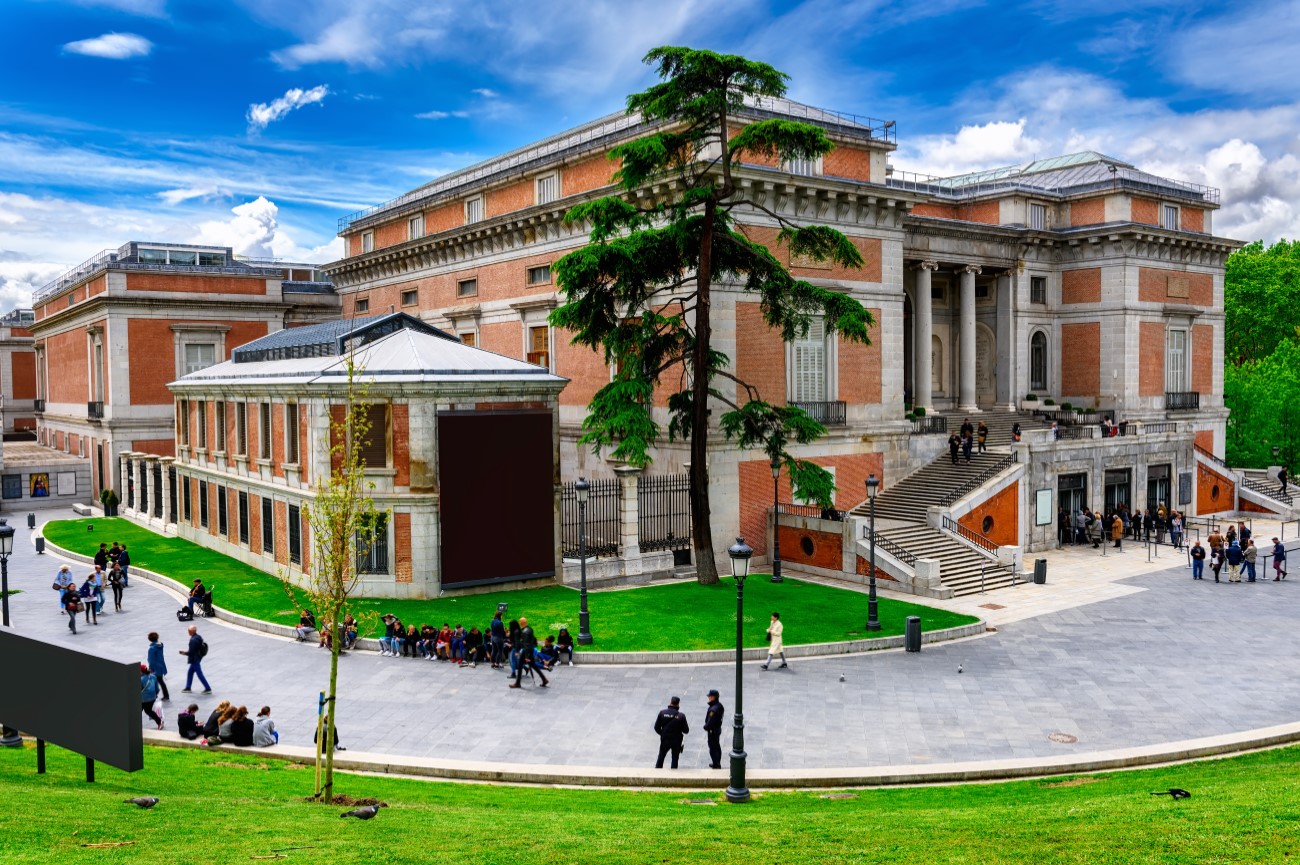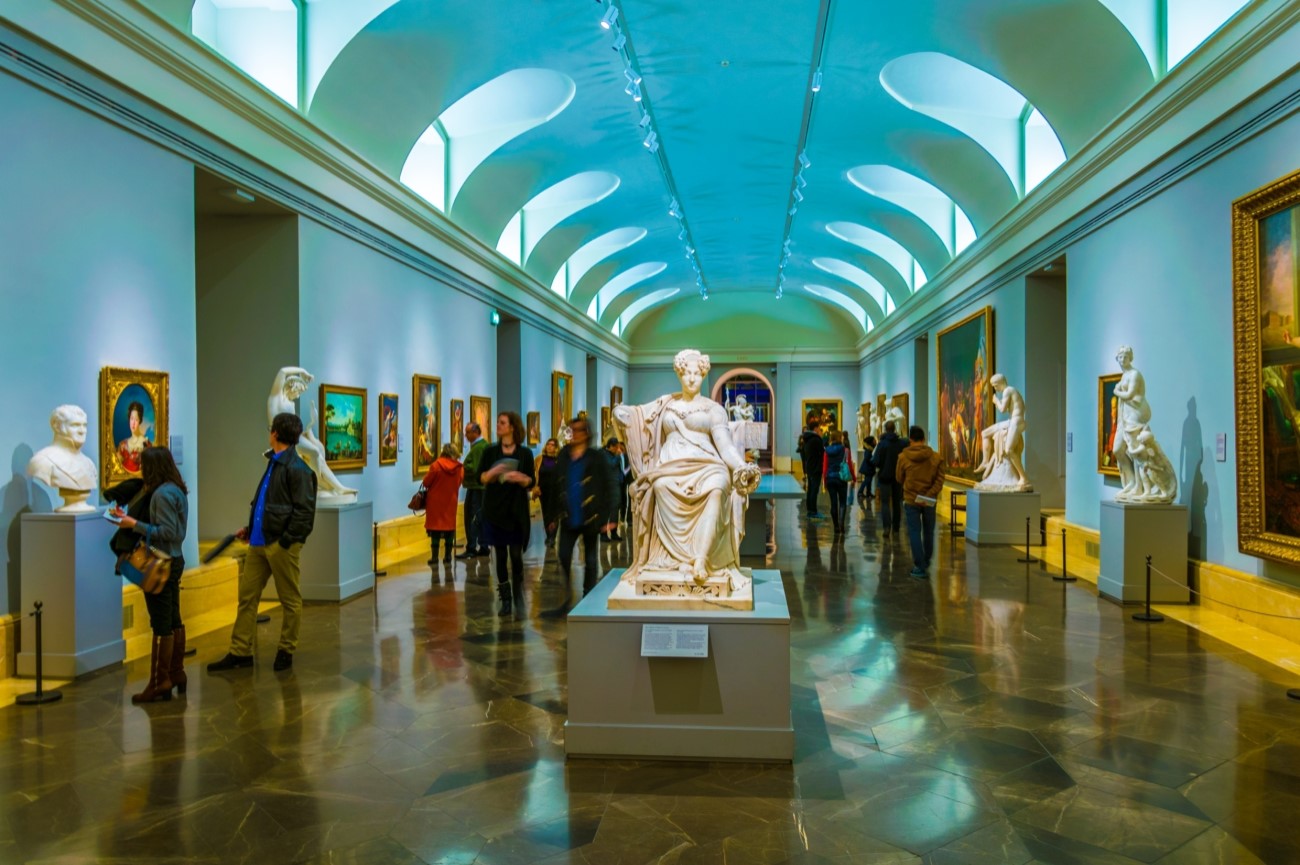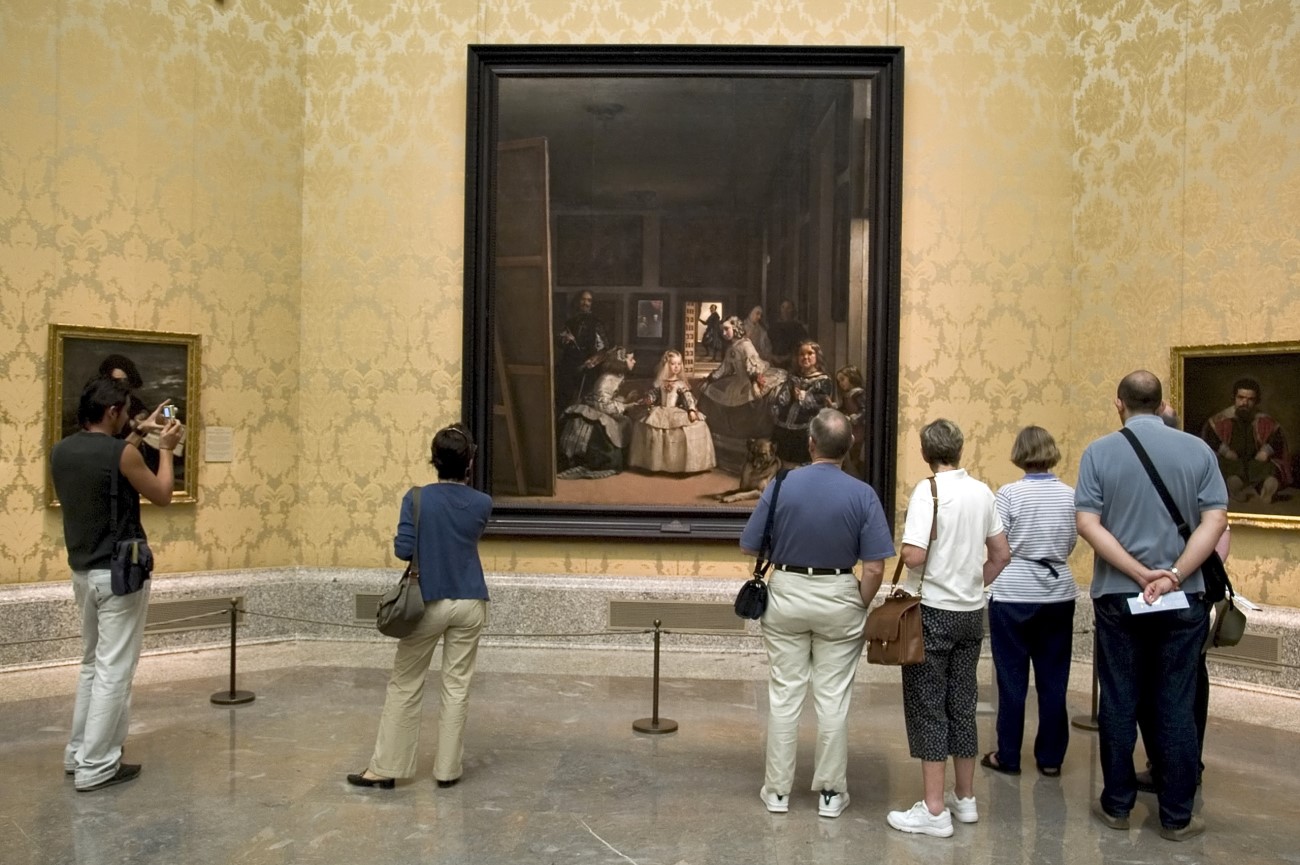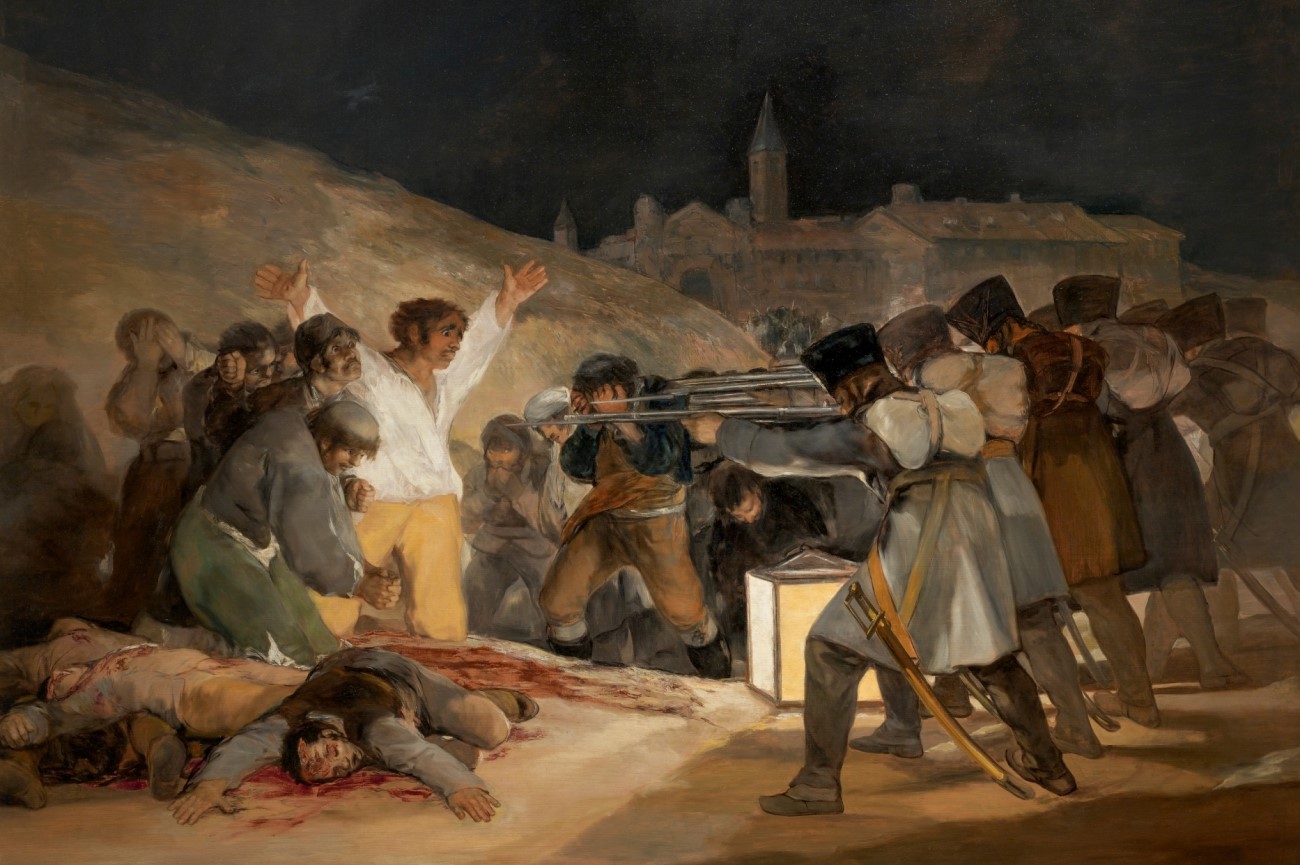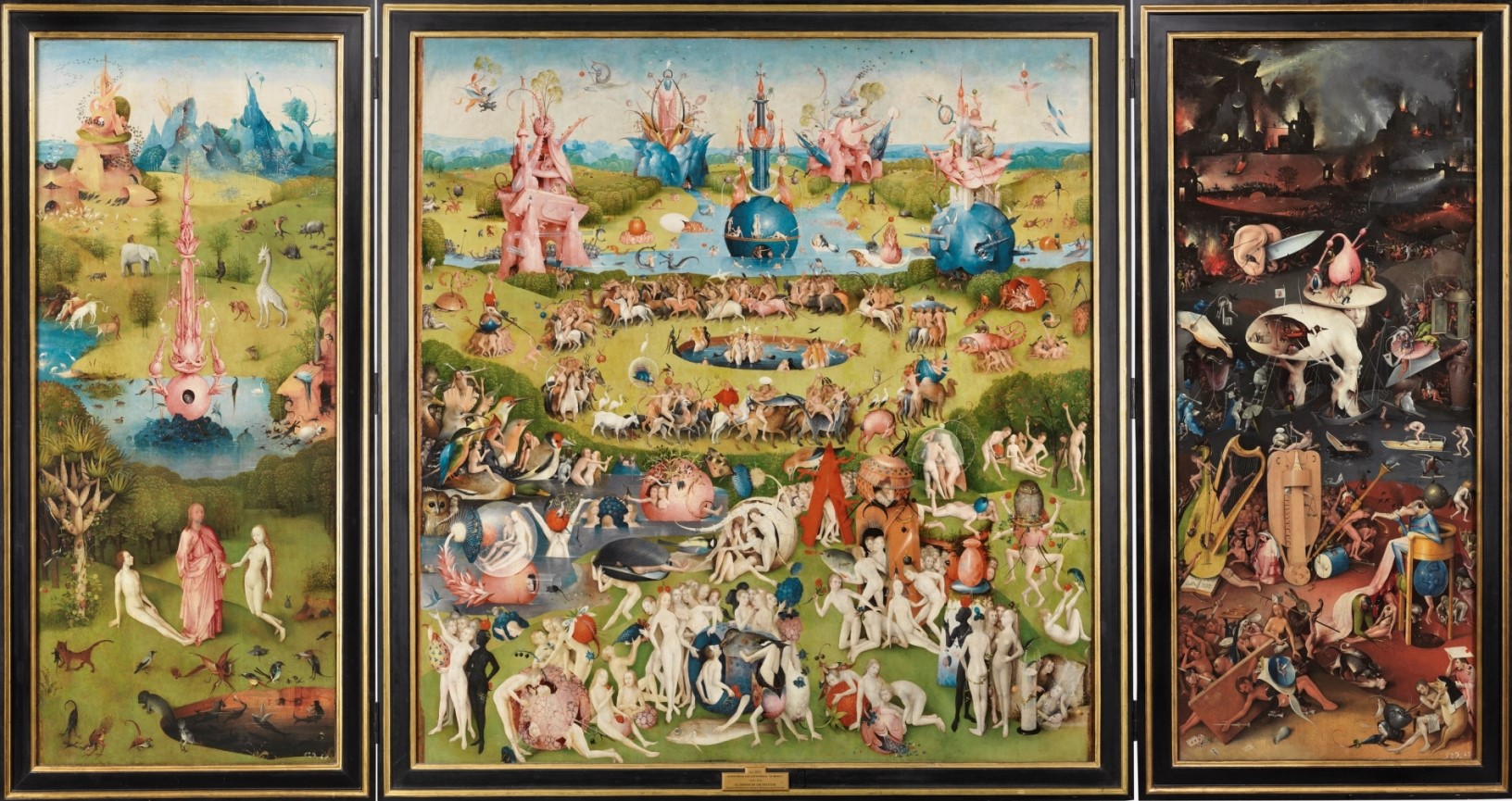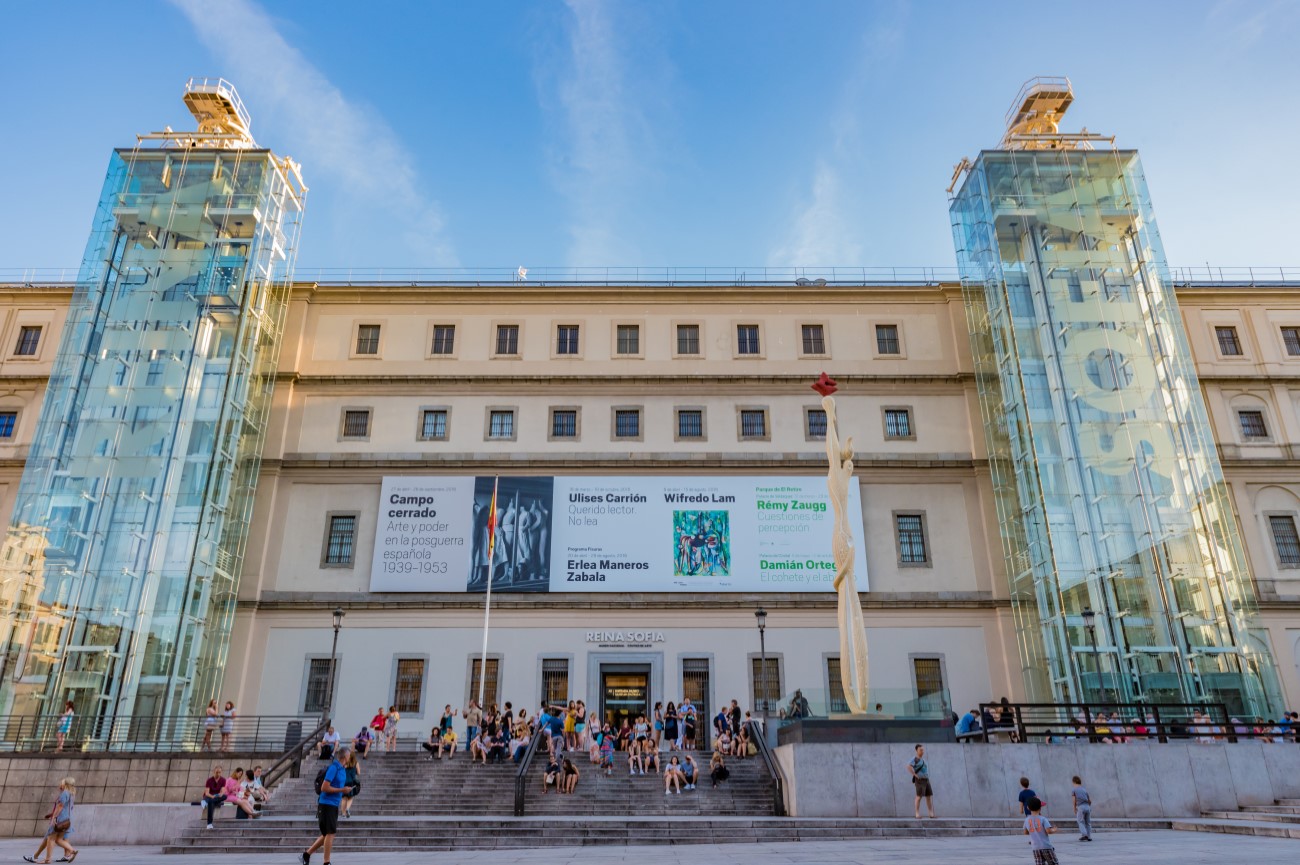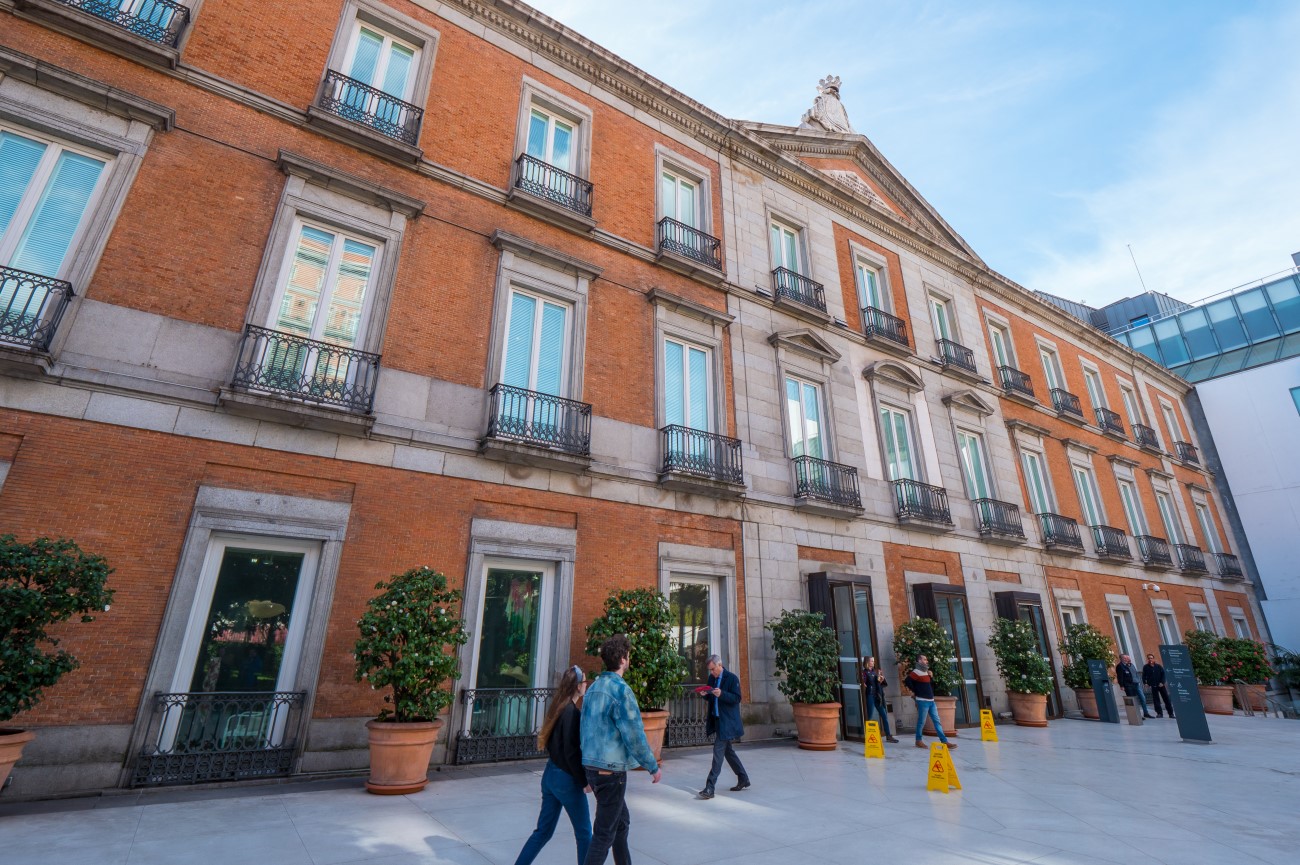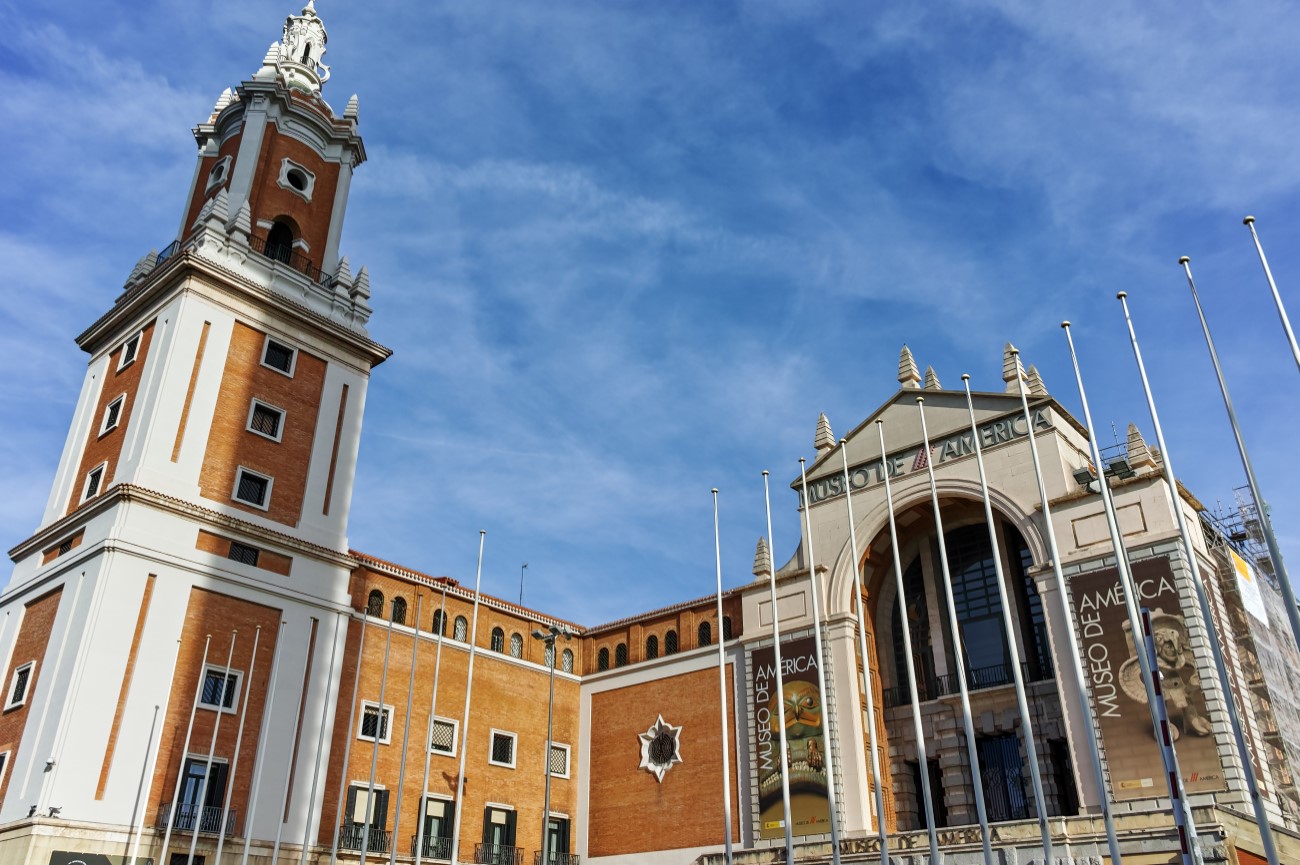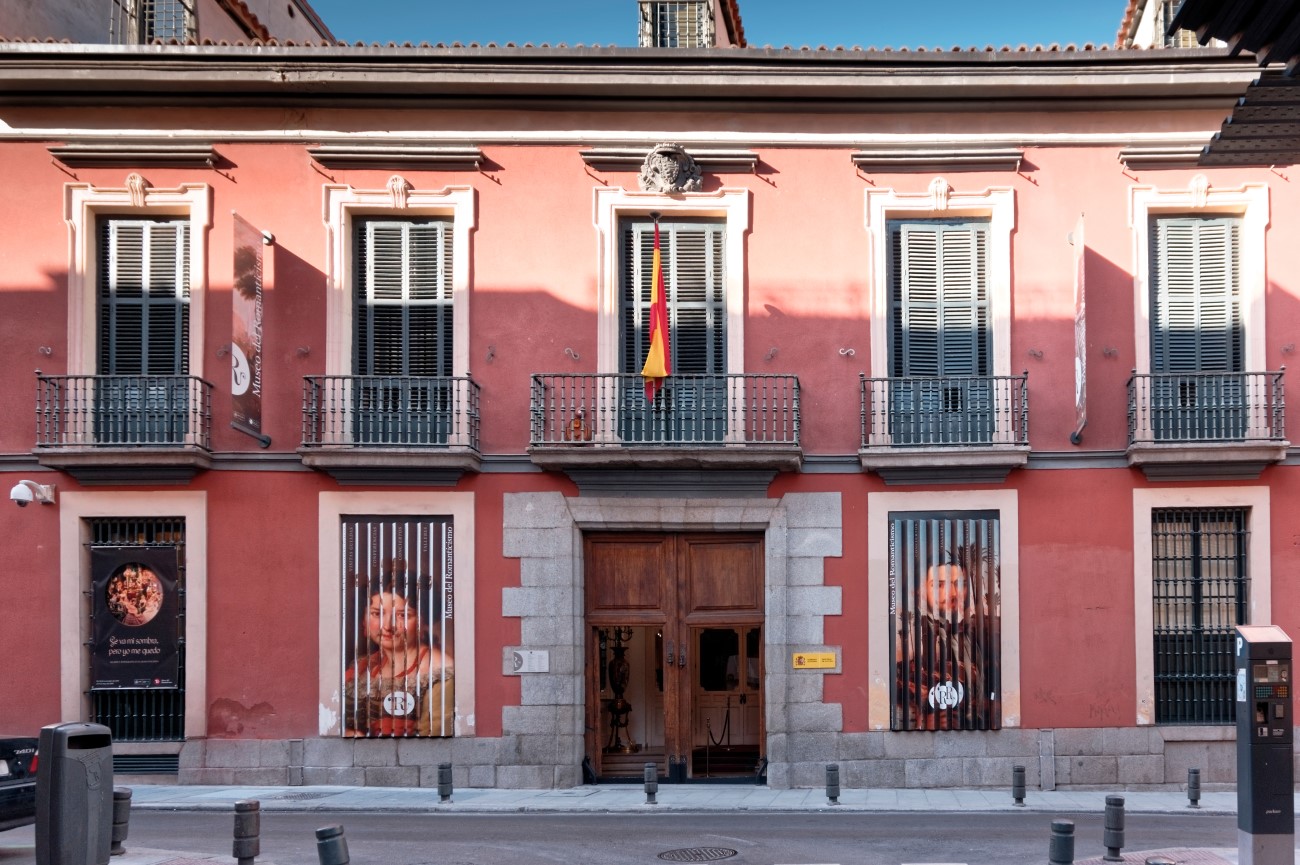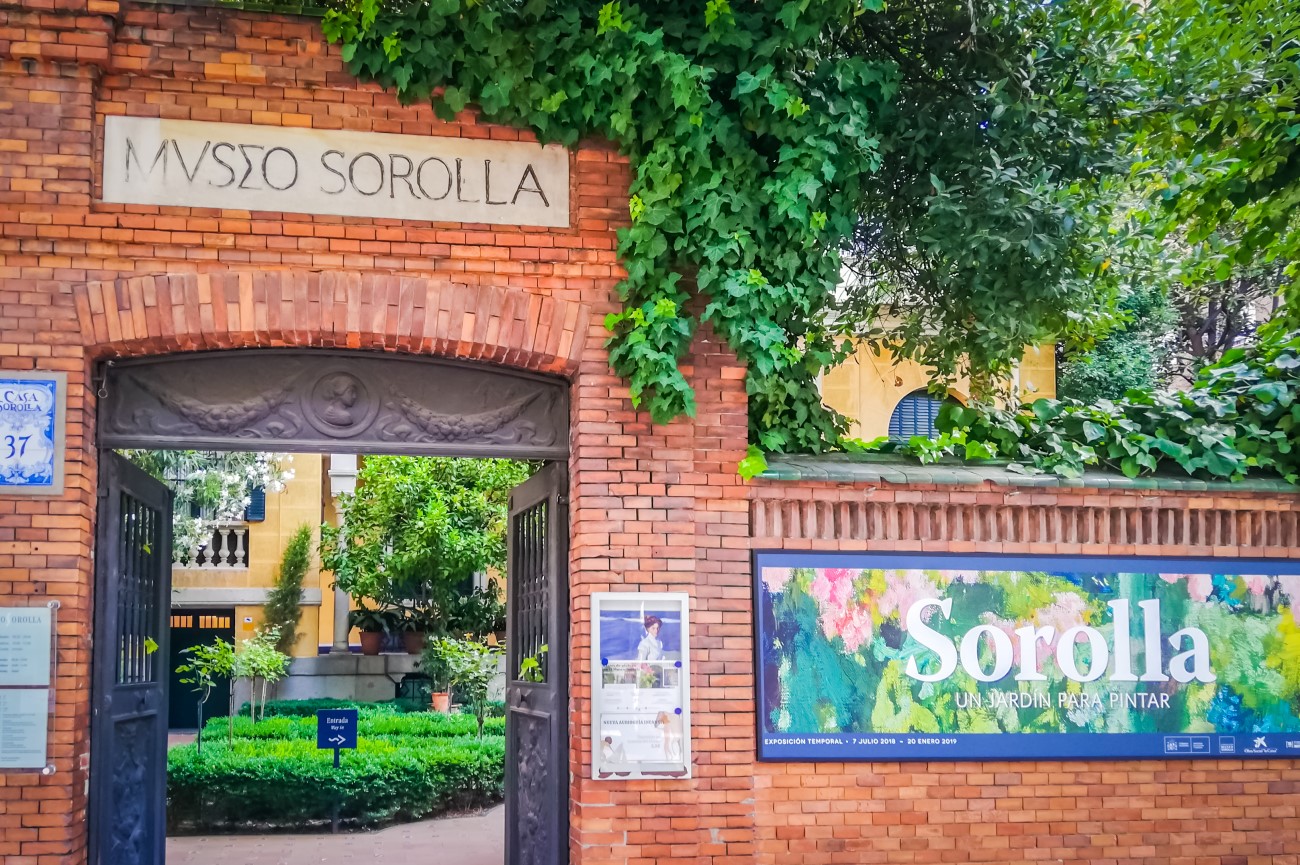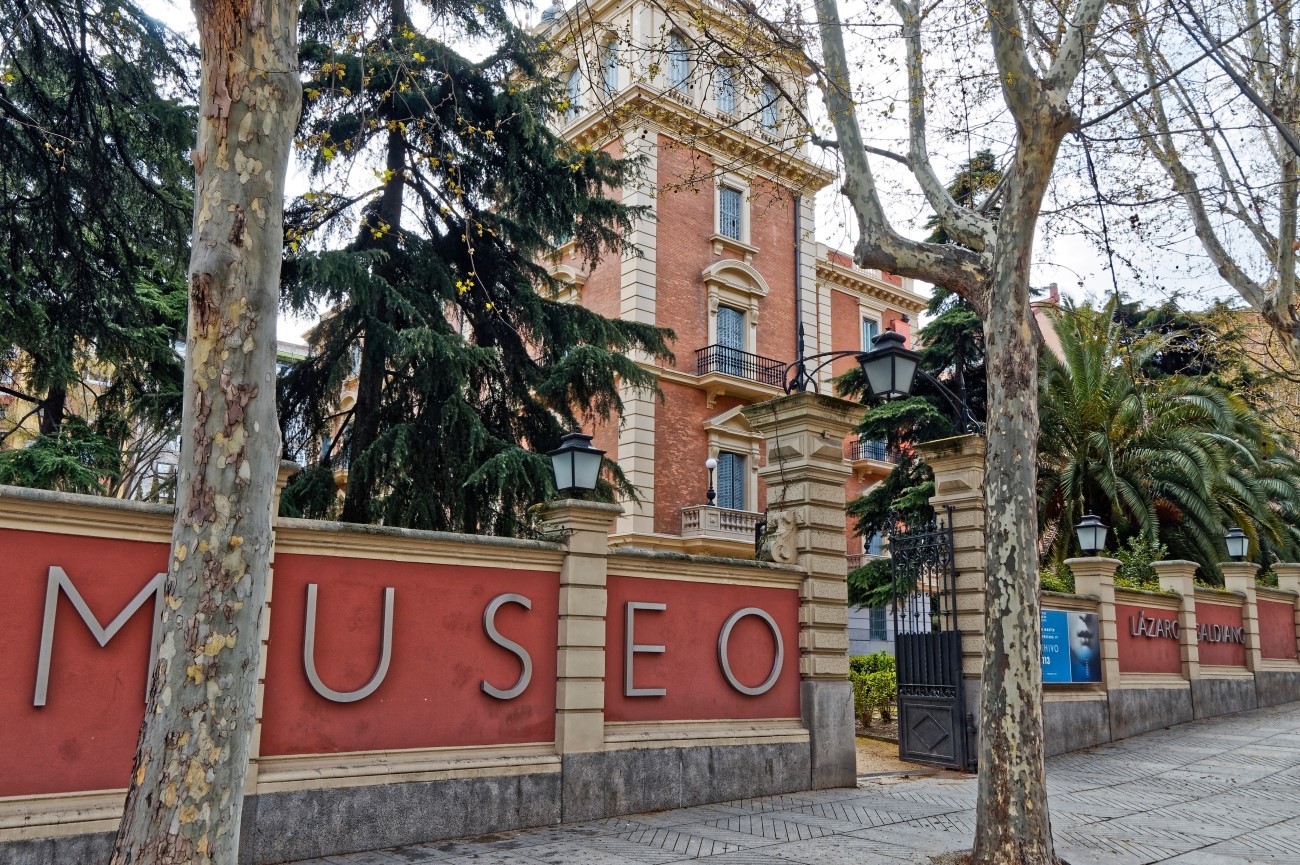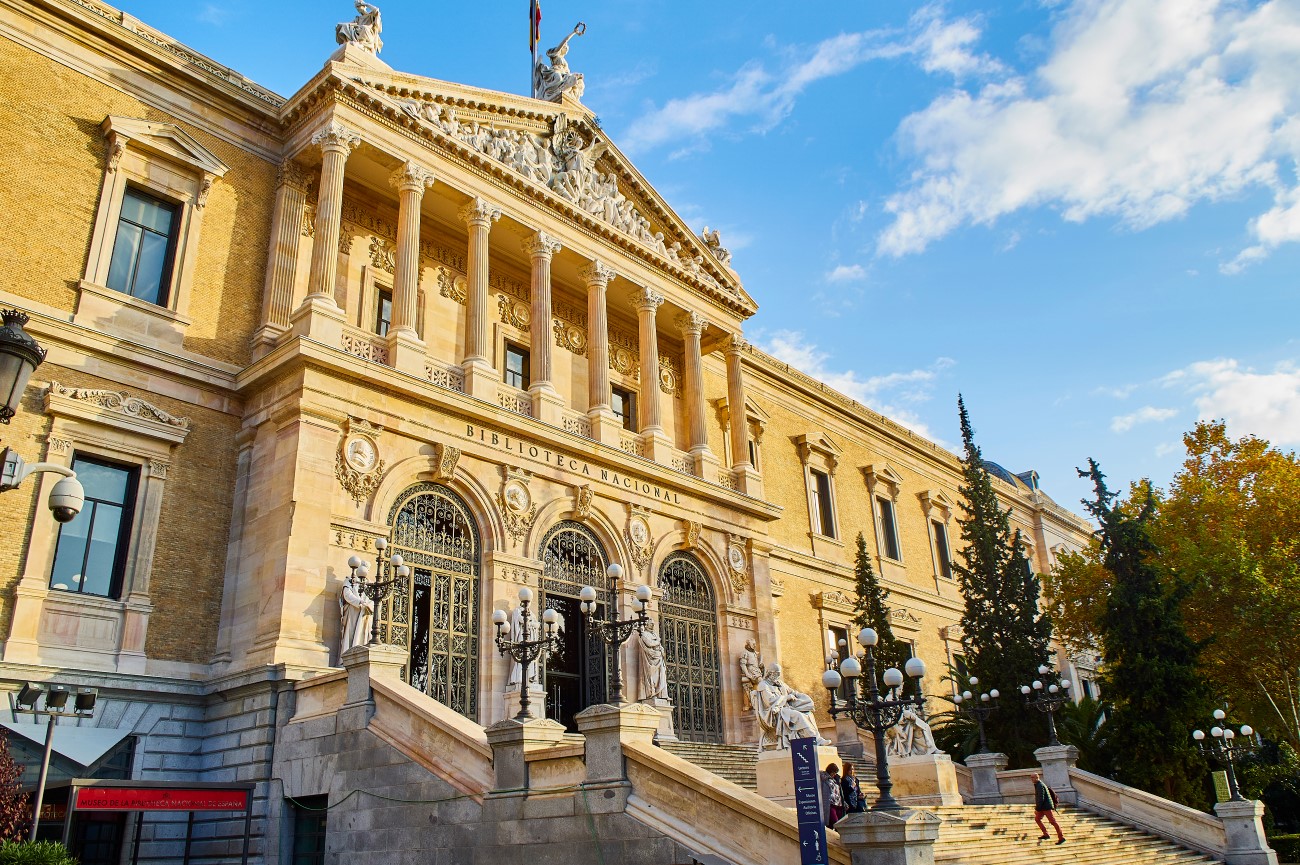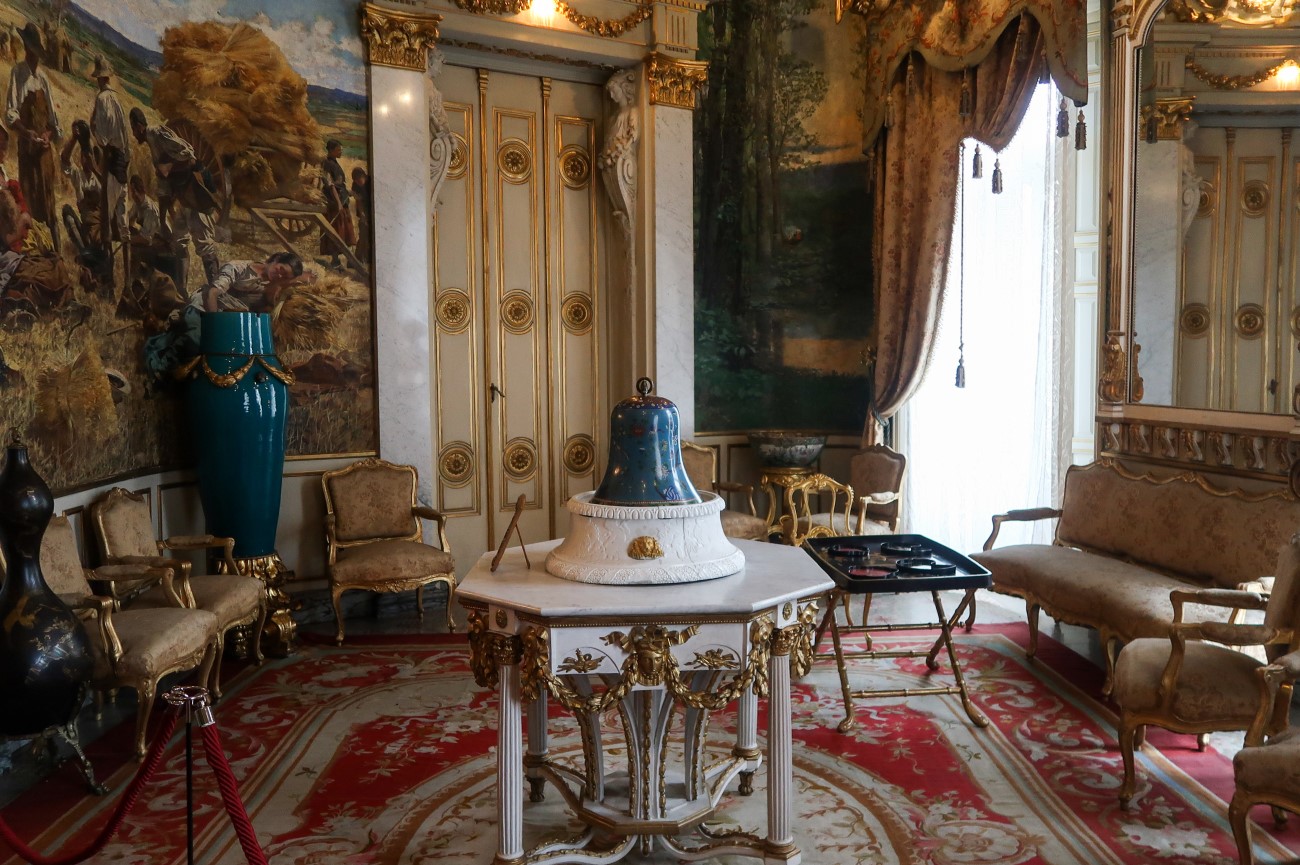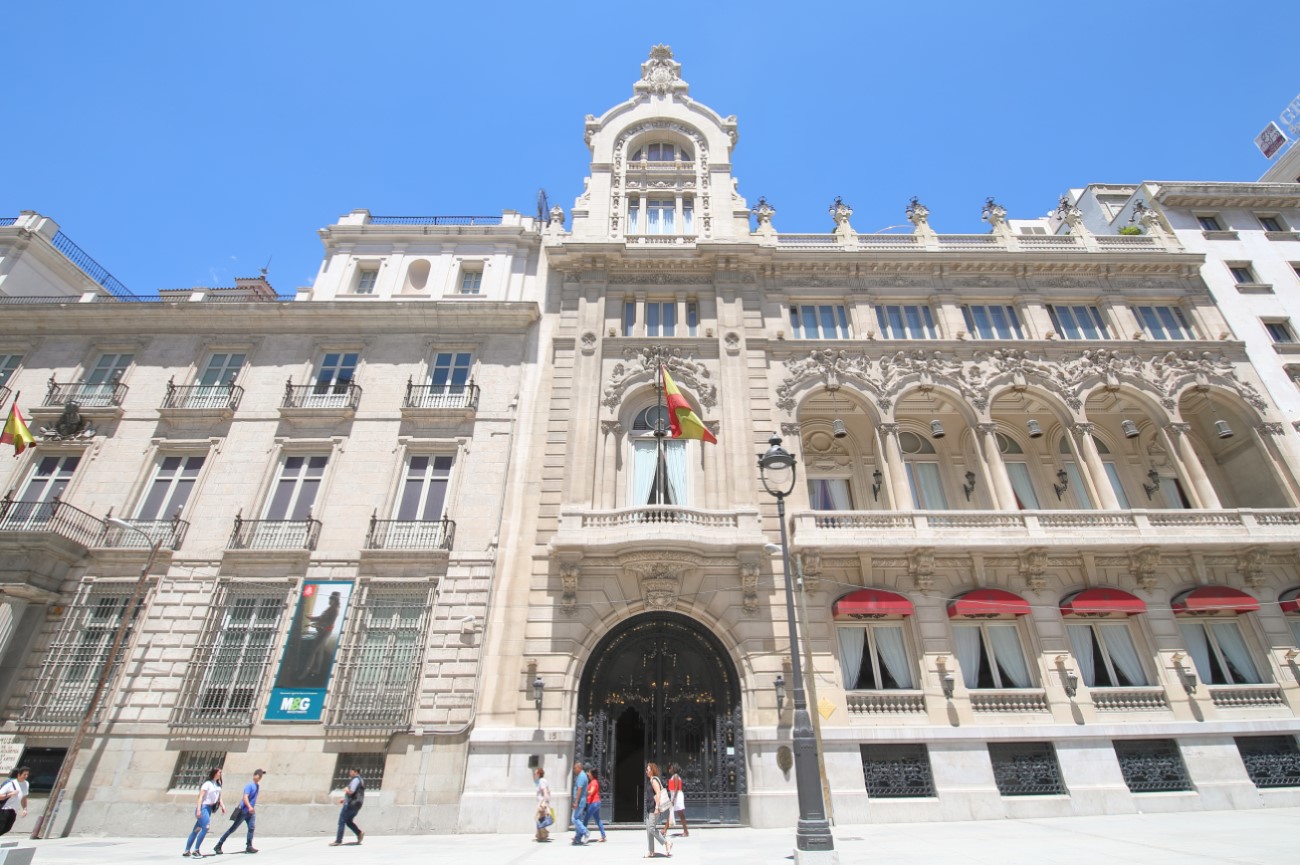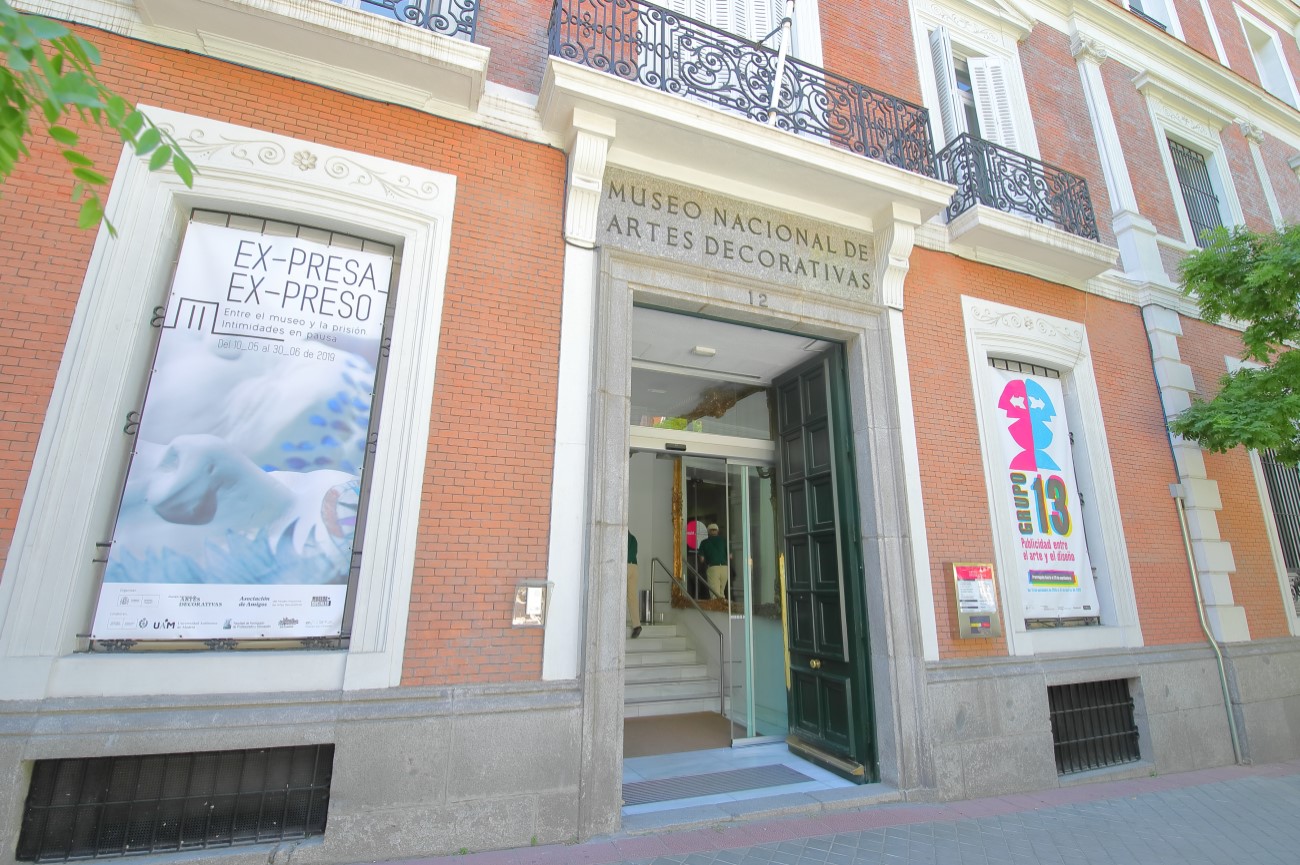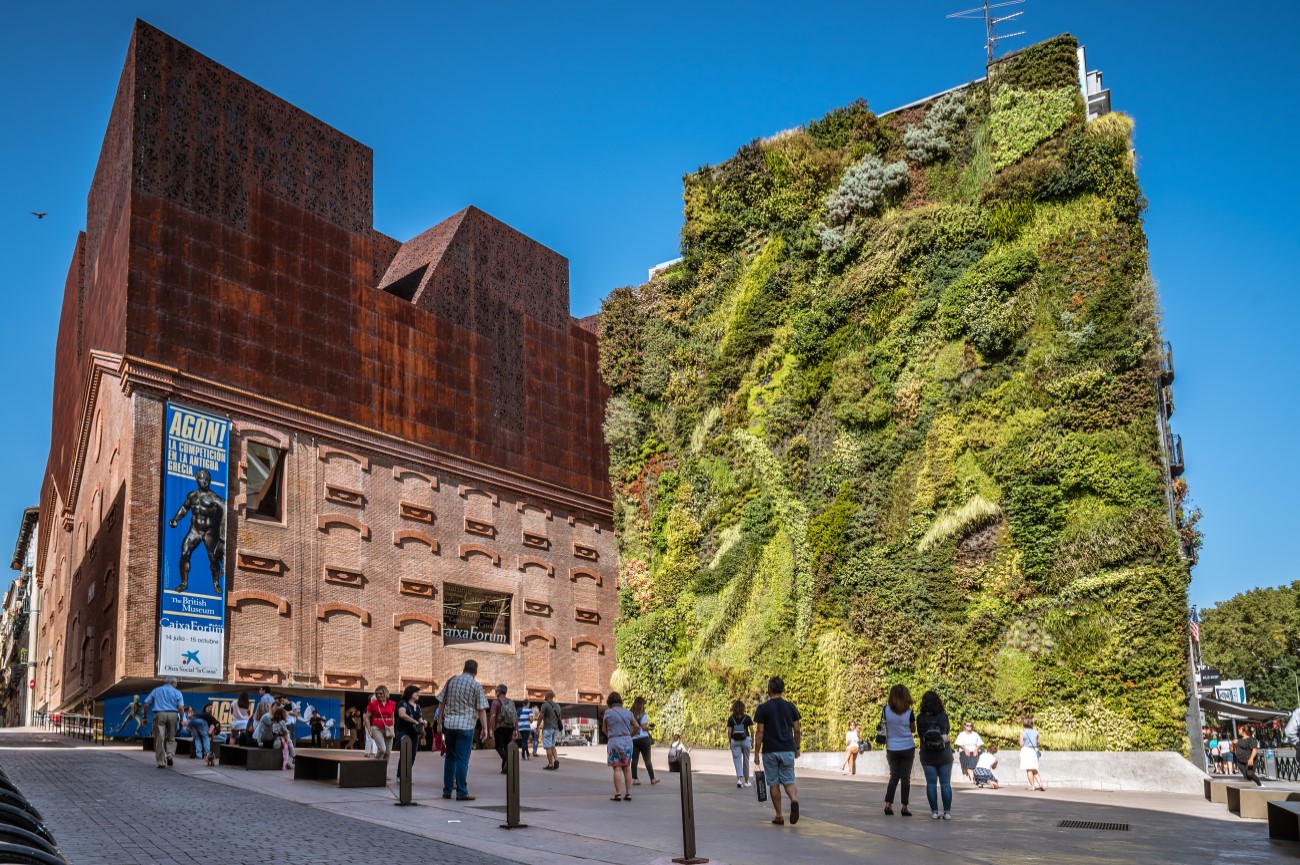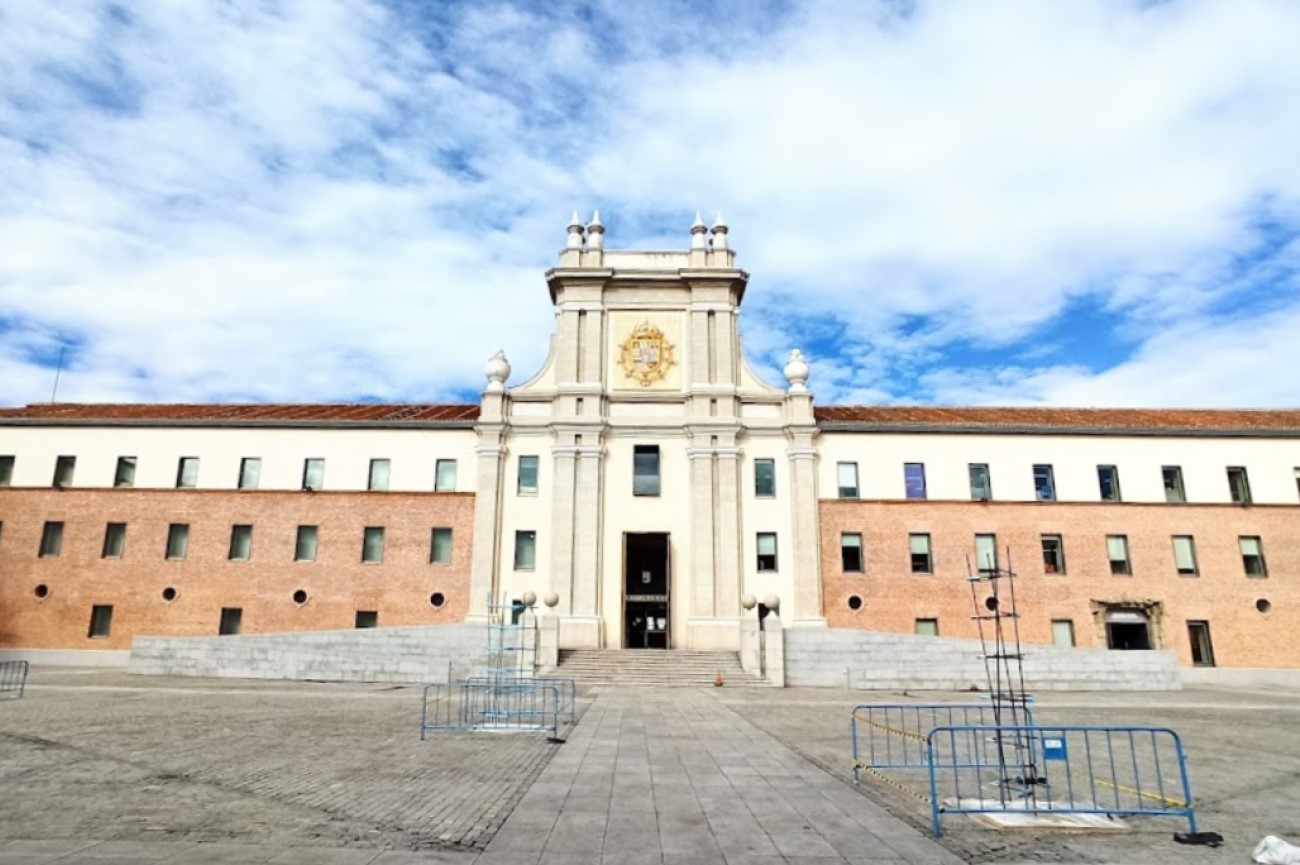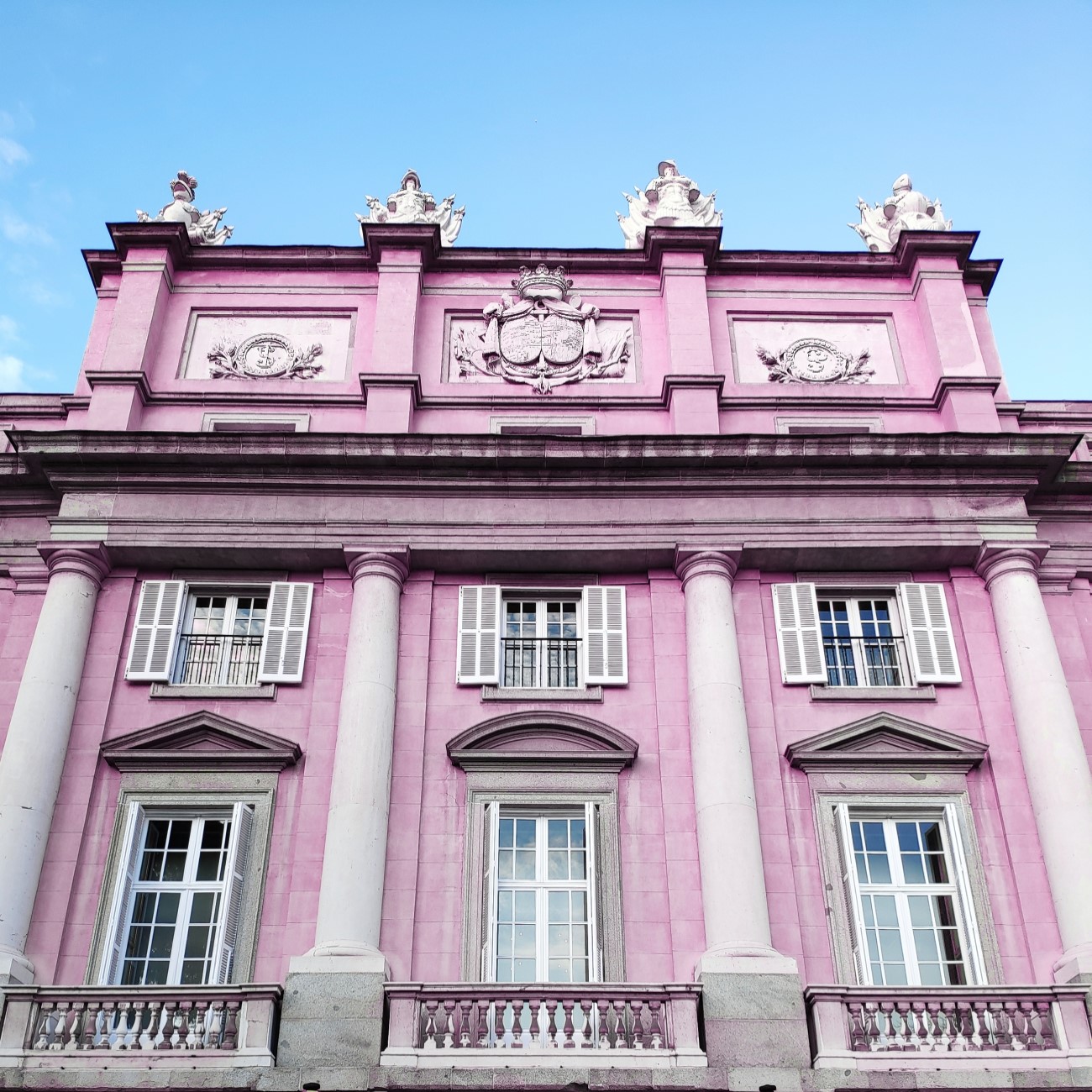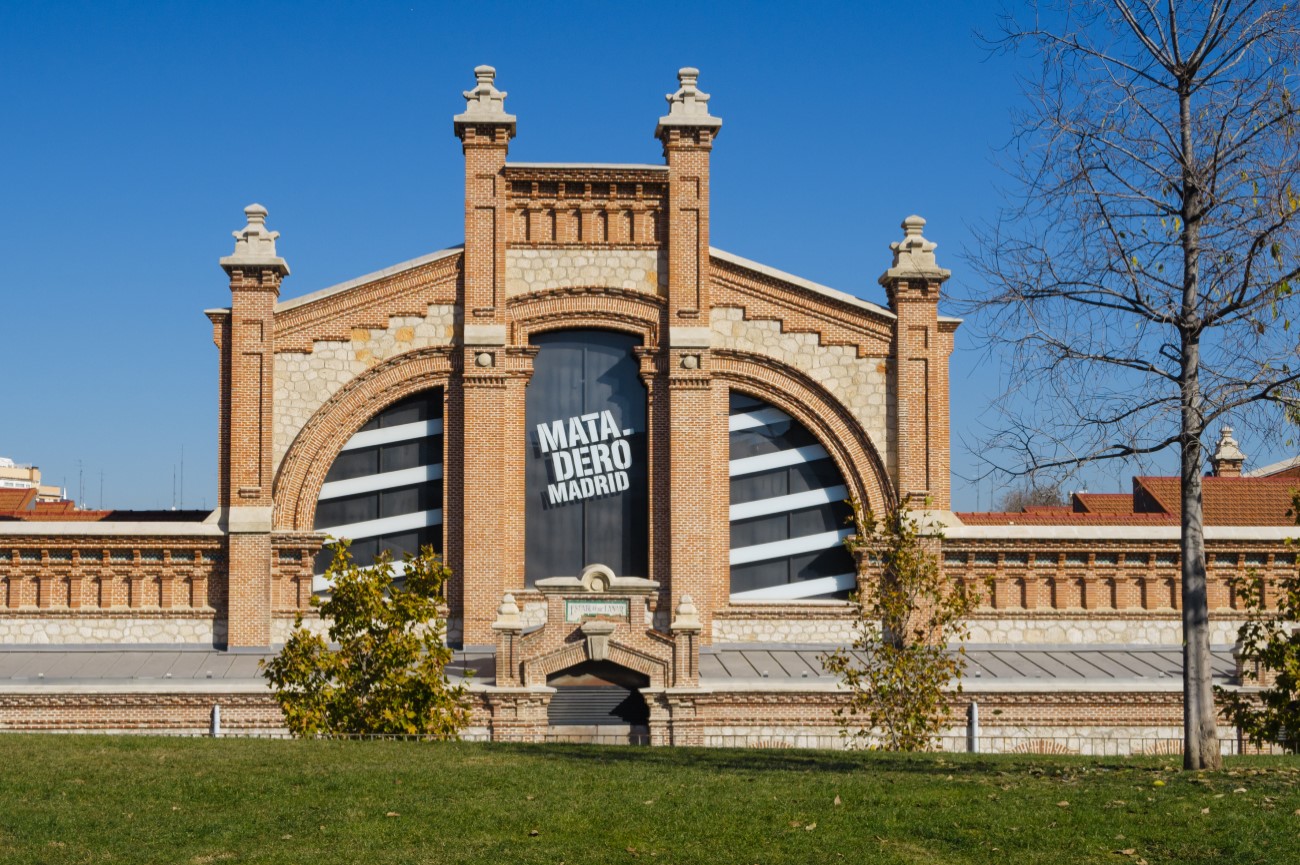Madrid Art Museums
You would be hard pressed to find a city with better art museums than Madrid. Paris and Amsterdam are certainly contenders, but Madrid holds its own with the best. You could fill an entire trip with art museums alone and come nowhere close to seeing everything.
With so many options, its best to pick a set of museums based on either style or geography. For fans of classical masterpieces, the Prado and Museo de Sorolla are excellent choices. More modern art can be found at the Reina Sofia and Museum of Contemporary Art. For those who wish to blend art and early history, the Archelogical Museum and the Museum of the Americas are for you.
If you’re looking to pack as many museums as you can into a single day, you’ll want to visit the “Golden Art Triangle” of the Prado, Reina Sofia, and the Museo de Thyssen Bornemisza. The CaixaForum is also very close, so visiting any combination of these four is a good plan if you’re strapped for time.
You’ll also find the Museo de Carralbo, Museum of Contemporary Art, and Liria Palace clustered together. These are excellent choices if you want to avoid the tourist rush that the Golden Triangle brings.
Below, we outline Madrid’s excellent art museums so you can make an informed choice.
Museo Nacional del Prado (Prado Museum)

The Prado Museum is not only the most famous art museum in Spain it is also one of the country’s top tourist attractions. Among art collections, there are few comparable in either scale or quality. Only the Lourve and the Met are in the same league. If you visit Madrid without seeing the Prado, you’re seriously missing out.
It also has a rich history. Founded in 1819, it was one of the world’s first public museums, and its unparalleled collection matches its legacy.
At the Prado, you’ll find works by every member of the Pantheon of Spanish artists – Murillo, Goya, Velázquez, and Ribera. There’s also no shortage of art from the greatest European masters from the Netherlands to Italy, including El Greco, Rembrandt, and Titian.
The Prado is unsurprisingly the home of the Spanish masters. Don’t leave without visiting the Velázquez rooms, one of which hosts “Las Meninas,” widely considered his greatest masterpiece.
For those with a taste for the dark, Goya’s artwork – showcased in its own room - is perhaps the Prado museum’s most unique collection. Spain’s most famous painter had a penchant for gruesome but poignant depictions of war and mythology. “Third of May 1808” is a must-see.
As a collection of masterpieces, Prado displays more unmissable paintings than you can see in one visit. Keep your eyes out for “The Garden of Earthly Delights” by Hieronymous Bosch and “The Nobleman with his Hand on his Chest” by El Greco.
The Prado often gets incredibly busy, especially during peak times. You can avoid the queues by booking your tickets online.
Located on the eponymous Paseo del Prado, the Prado Museum is reachable from most locations in central Madrid on foot. We’d recommend the walk as the city’s largest museum is in one of its most scenic areas.
If you want to take public transport, the closest metro station is the creatively named Estación del Arte, which will deposit you just across from the museum on the other side of the Real Jardín Botanical (Royal Botanical Gardens).
Depending on where you’re coming from, it may be better to take line 2 to Banco de España, a 9-minute walk from the Prado.
If Prado’s extensive collection isn’t enough to satiate your appetite for art, there are plently of excellent museums nearby. The Prado is the centrepeice of Madrid’s “Golden Art Triangle.” Both the Reina Sofia and Thyssen-Bornemisza museums, world-class in their own right, are within easy walking distance.
For a more relaxed end to your visit, you could stroll through the nearby Parque de El Retiro, an expansive and stunning park home to the crystal palace.
Museo Nacional Centro de Arte Reina Sofia (Reina Sofia Museum)

If the Prado’s collection felt too old fashioned for your taste, then the Reina Sofía might be more up your street. It has an impressive 20,000-piece permanent collection , one of the largest in the world dedicated to modern art. Spanish artists Picasso, Miró, Dalí, and Julio González all have their own rooms. You’ll also find art from 20th-Century masters like Max Ernst and Georges Braque.
The Reina Sofia is also perfect for bibliophiles. It doubles as the most extensive Spanish-language library dedicated to art in the world. The library holds over 100,000 books, 3,500 recordings, and 1,000 videos. All of which are free and open to the public.
The centrepiece of this museum is undeniably “Guernica,” Picasso’s earth-shattering depiction of the bombing of the Spanish town during the Spanish Civil War.
This museum draws a huge crowd, so it’s good to arrive early and book a ticket in advance. There is free admission during the last two hours of the day, but this also draws even larger-than-normal crowds.
The Reina Sofia is located near the Prado on the Real Jardín Botánico (Royal Botanical Gardens), closest to the Estación de Arte, which is your best bet to get there via public transport.
Museo de Thyssen-Bornemisza (Thyssen-Bornemisza Museum)

Much smaller but no less essential is the private collection of Baron Hans-Heinrich Thyssen-Bornemisza. The 775 paintings span much of European history and every conceivable style.
The collection is housed in the stunning 19th-century neoclassical Villahermosa Palace, recently refurbished by architect Rafael Moneo. On the grand Paseo del Prado, the museum is only a short walk from both The Prado and Reina Sofía museums.
The Museum’s second-floor houses beautiful examples of Medieval art from Italian, German, and Flemish painters.
Those with a preference for the surreal or abstract should stay on the ground floor. Here, you’ll find examples of works by Dalí, Picasso, Lichtenstein, and Joan Miró.
Meanwhile, the first floor features several masterpieces, including Van Gogh’s “Les Vessenots” and Gauguin’s “Mata Mua.”
Like the Prado, the Thyssen-Bornemisza is best reached by either the Banco de España or Estación de Arte metro stations if you want to use public transport.
Museo de las Americas (Museum of the Americas)

While most art museums in Madrid feature European paintings produced over the past several hundred years, the American Museum displays art and artefacts from across the pre-Columbian Americas.
Don’t leave the museum without seeing its illustrated Mayan glyph manuscript, one of only four in existence.
The collection also features an intricate carving of the Mayan city of Palenque and the Gold of the Quimbayas, an indigenous civilisation that emerged in what is now Colombia.
The Museum of the Americas is just outside of central Madrid but is accessible in just under 30 minutes by public transport. You’ll want to take metro line 3 to Moncloa station. From there, it’s an 8-minute walk.
After visiting the Museum of the Americas, you may want to go on a stroll in Parque del Oeste (Western Park) with a fitting statue of Simón Bolívar, who led some of Spain’s South American colonies in revolution against the Spanish King.
Museo del Romanticismo (National Museum of Romanticism)

The Romanticism Museum is like a time machine transporting you back to Romantic era Madrid. It showcases the best art, decorations, furniture, and everyday objects from the 19th Century, including several paintings from Goya, Madrazo, and Antonio María Esquivel.
Interactive touchscreens add an element of the modern while also adding colour to the daily lives of Madrid’s wealthy at the end of the Century.
The collection is housed in a refined neoclassical palace in the trendy Chueca neighbourhood on Calle de San Mateo.
Be sure to stop by the museum’s lovely and underrated Café de Jardín (Garden Cafe) before leaving.
The closest metro station to the Romanticism Museum is Tribunal, serviced by line 1. The museum is a short 17-minute trip from Plaza Mayor.
If you’re still in the mood for visiting museums after finishing up at the Romanticism Museum, pop into nearby the (Museo de Historia de Madrid) Madrid History Museum.
Museo de Sorolla (Sorolla Museum)

This museum is a celebration of the work of Valencian impressionist painter Joaquín Sorolla, known for his paintings of Spanish landscapes that emphasise light and colour. The collection is showcased in what was Sorolla’s home and studio.
This museum also has small gardens that add to the atmosphere of the space.
Depending on your position, it will make sense to travel to either the Iglesia or Ruben Dario stations, serviced by line 1 and line 5, respectively. Both stations are an identical 7-minute walk from the Museum. The Sorolla also has its bus station if you prefer not to walk at all,
The nearby Calle de Engracia (Engracia Street) is host to several excellent bars and restaurants if you want to eat before or after visiting the Sorolla. You could also visit the nearby Lázaro Galdiano Museum.
Museo de Lázaro Galdiano (Lázaro Galdiano Museum)

The Lázaro Galdiano museum is a celebration of the 15,000-painting private collection of financier José Lázaro Galdiano, who had more money than the Spanish Government. Galdiano was a patron of Goya, and unsurprisingly his collection contains many of the famous Spanish artist’s pieces.
You’ll also find paintings by Hieronymus Bosch on display in Galdiano’s Madrid mansion, surrounded by English gardens.
The Lázaro Galdiano Museum is within walking distance of the Sorolla, making them an excellent pairing on your itinerary. If you’re not walking to the Galidano, you’ll want to take the metro to either the Rubén Darío or Gregorio Marañón stations.
Museo Arquelógico Nacional (National Archaeological Museum)

The National Archeological Museum showcases cultural artefacts from much further back in human history, including prehistoric works. Most of the pieces in the collection are from the Iberian, Celtic, Greek, Egyptian, Punic, Roman, Paleochristian, Visigothic, and Muslim cultures.
A set of mammoth tusks (with a skull attached!) is proudly displayed.
In the courtyard outside the museum, you’ll find a replica of Altamira, the first discovered pre-historic cave painting in Europe.
The Archaeological Museum has themed itineraries depending on your interests (women in ancient history, music).
Just north of Parque de El Retiro and accessible mainly from the Retiro metro station, the Archaeological Museum is likely to be about 20-30 minutes if you’re staying in Madrid’s city centre.
After viewing the museum, Plaza Colón, directly across the street, is well worth a visit. The square features impressive architecture and plenty of cafes if you want lunch or a coffee.
Museo de Carralbo (Cerralbo Museum)

Step back in time with the Cerralbo Museum. In this space, the private collection of the 17th Marqués de Cerralbo is still arranged in the way he displayed it. He bought over 50,000 objects and paintings during his lifetime.
While not the most well-known museum in Madrid, the space is a feast for the eyes. The mansion’s furnishings include a maze of mirrors, intricate wall etchings, and the most scenic staircase in Madrid.
After your visit, the Temple of Debod is just across the street if you have time. A curious sight, this ancient Egyptian temple was dismantled and rebuilt in Madrid. On the exact other side of the museum is the Plaza de España with its famous Cervantes monument.
The closest metro station is Plaza de España, but you could walk over very quickly if you’re visiting the Palacio Real de Madrid (Royal Palace).
Real Academia de Bellas Artes de San Fernando (San Fernando Fine Art Academy)

The San Fernando Fine Art Academy dates back to 1794. Its collection features 13 works by Goya and several portraits by Velázquez and Rubens.
One massive draw for this museum is that it houses one of the world’s most important collections of engravings, including some of Goya’s original plates.
If you’re in the centre of Madrid, it will almost certainly be easier to walk to the San Fernando Academy than take public transport. If you’re outside the centre, then the nearest station is Sevilla.
Make sure you don’t leave without visiting the Puerta del Sol, a massive plaza surrounded by quaint cafes and stalls. As the name suggests, it’s the perfect spot to enjoy an espresso and Madrid’s sun.
Museo Nacional de Artes Decorativas (National Museum of Decorative Arts)

One of the oldest in the city, this museum is less fine art and more object-oriented. The 15,000-object collection includes furniture, tapestries, jewellery, and actual treasure.
You’ll find art from far-flung destinations like Goa and China on the second and third floors. Don’t leave without seeing the Sévres jug that Napoleon III gave to Queen Isabel II.
The Museum is a short walk from the Puerta de Alcalá, a splendid neoclassical 5-arched triumphal gateway. It’s worth both a visit and a photograph. It also opens onto Parque de El Retiro, an essential part of any Madrid itinerary and is stuffed full of palaces.
Like the nearby Prado, the Museum of Decorative Arts is only a short walk from the Banco de España.
CaixaForum Madrid

Located near the “Golden Triangle of Art” on the Paseo del Prado, the CaixaForum is an innovative art gallery and cultural centre. The CaixaForum’s building is the former Mediodía Electric Power Station, an imposing modernist building that will thrill architecture buffs.
This museum is a favourite among locals, and, unlike the Prado, you’re more likely to hear Spanish than English walking through its galleries.
If you prefer living art, the CaixaForum is world-famous for its vertical garden, a 24-meter wall of flowers composed of 15,000 plants spanning 250 species. French botanist Patrick Blanc curated the piece.
The vertical garden alone makes the gallery worth visiting if only to snap a photograph.
Given its proximity to the Prado and Madrid’s other great museums, you’re probably not making a unique visit. However, like the Prado, the best museum for visiting CaixaForum is El Estación de Arte.
Museo Municipal de Arte Contemporáneo (Museum of Contemporary Art)

The Museum of Contemporary Art in Madrid’s newest. Opened in 2001, it houses a wide-ranging 20th and 21st Century art collection. Among its over 200 works, there are examples of what the museum calls “Vanguards” – artists who may not be from recent history but was well ahead of their time in style and technique.
The museum’s collection includes works by Francisco Bores, Benjamin Palencia, José Caballero, Daniel Vázquez Días, and Hipólito Hidalgo de Caviedes.
The nearest metro station to the Museum of Contemporary Art is either Ventura Rodríguez or Plaza de España, from which it is a 2-minute walk.
Given its proximity to so many other excellent museums, the Liria Palace and Museo Cerralbo, we recommend pairing this museum with another for a day trip.
Palacio de Liria (Liria Palace)

Right beside the Museum of Contemporary Art, The Liria Palace displays the art and documents amassed by the House of Alba over five centuries. The museum offers a 65-minute guided audio tour, with narrators changing every room and era.
You can get to the Liria Palace the same way you reach the Museum of Contemporary Art, via stations Ventura Rodríguez or Plaza de España.
Matadero Madrid

Housed in a former slaughterhouse, the Matadero Madrid is an exciting space that showcases contemporary art and exhibitions, performances, and cinema.
The Matadero is located to the south of the city centre and is best accessed via public transport. You won’t be able to walk to it unless you’re staying outside the centre. The nearest metro station is Legazpi, which is serviced by line 3. The Matadero is then a short two-minute walk from the Legazpi.
Visiting the Matadero has taken you a little off the beaten path in Madrid, but this presents an opportunity. We suggest walking part of the way back to the centre along the banks of the Manzanares river, which is surrounded on both sides by the Parque Madrid Río (Madrid River Park). You’ll want to stop and admire Toledo Bridge, a historic 18th Century footbridge at the park’s centre.

